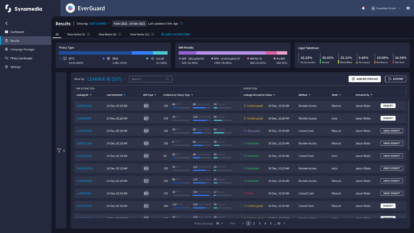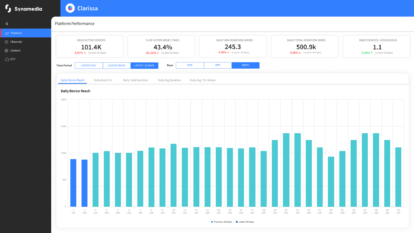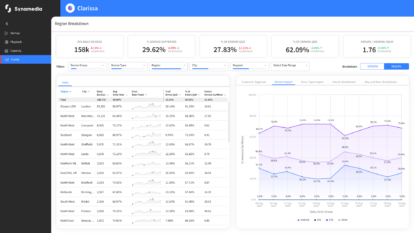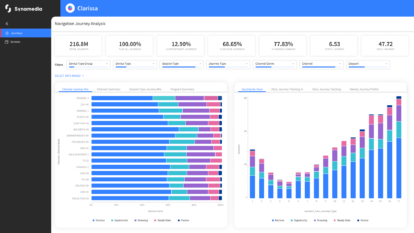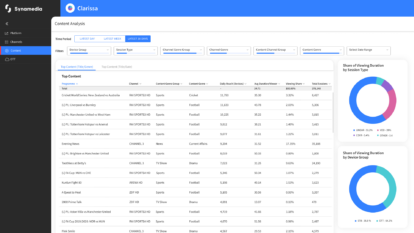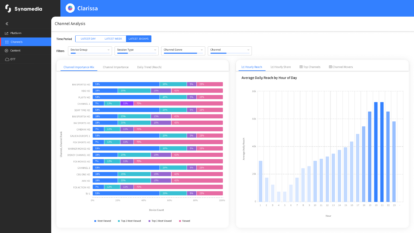You’ve often heard the phrase: “it’s the best of both worlds.” The TV viewing experience is no exception.
The outcome of this saying is what we call a hybrid: anything derived from heterogeneous sources or composed of elements of different or incongruous kinds. In fact, Synamedia itself can be considered a hybrid. Our company, less than two years old, is a combination of long lasting, innovative organizations that, throughout the preceding decades, have helped shape infinite entertainment, and we are now helping to transform how we’re entertained and informed. Our industry is not much different.
When you look at the vast number of content options, user experiences, pricing options and overall apps or channels available to consumers, it’s an embarrassment of riches. It is so overflowing in fact, it makes you wonder whether consumers could possibly be satisfied with just one element of the content experience— either broadcast or OTT— or would they prefer a hybrid, as we are here at Synamedia?
You know where we’re placing our bets…
With so many services becoming available, viewers are overwhelmed, some service providers won’t survive and some cord-cutters, tired of searching for content, may ultimately watch less TV. To avoid this fate, traditional pay TV programmers and new players must join forces to offer converged, curated skinny bundles that better meet consumer demand.
Skinny bundles have already begun to reshape the television industry. In the US, this reshaping will also be impacted by ATSC 3.0 NextGen TV which enables higher quality signals, multi-screen services, and direct-to-consumer delivery. All of these open up new routes to revenue for everyone- from streaming services to local broadcasters to traditional pay TV behemoths.
The Best of Both Worlds (Pay TV and OTT) and Nothing Less
Synamedia is pioneering an industry-leading initiative to package hybrid services that can consist of both pay TV and OTT streams. Most recently this has been achieved through the enablement of ATSC 3.0 services and by leveraging converged headends for ubiquitous bandwidth and a more unified delivery experience. While the groundwork for hybrid has already been built, Synamedia is taking it to the next level.
There’s little doubt that consumers will be attracted to this new level of broadcast services that promise higher video quality, immersive audio and program synchronous OTA and OTT services. Such features are only possible through a new generation of compression optimization and statistical multiplexing technologies, which Synamedia excels at delivering. As a result, hybrid pay tv services, now leveraging heightened broadcast services, will attract viewers like never before.
Consumers are used to having the power of choice. It’s in a service provider’s best interest to put the choice in their hands and deliver what they’re asking for. And if that means hybrid pay TV and OTT, then so be it.
If not, consumers will continue to craft their own experience, and at the expense of those service providers who don’t take the consumer’s lead in their demand for a hybrid experience.
History does often repeat itself. And when it comes to hybrid TV packages, we predict that trend will remain true. And the consumer’s trek towards hybrid pay TV services continues…
About the Author
Mark Myslinski is Broadcast Solutions Manager, responsible for Synamedia’s Video Network streaming and broadcast solutions for web/OTT providers and station broadcasters (ATSC 3.0). Mark’s expertise spans video processing for live, file and recording applications for direct-to-consumer, and he has 15+ years of industry expertise in directing product development initiatives and managing roadmaps for ATSC, IPTV and OTT solutions.
Prior to joining Synamedia, Mark held product and deployment management positions at Intelsat, Motorola Broadband and Encompass Digital Media, as well as systems engineer positions at TelVue Corporation and Cox Communications.
Mark holds a B.S. in Electrical Engineering from Penn State University, and completed masters classes in Digital Communications at Rutgers University.

